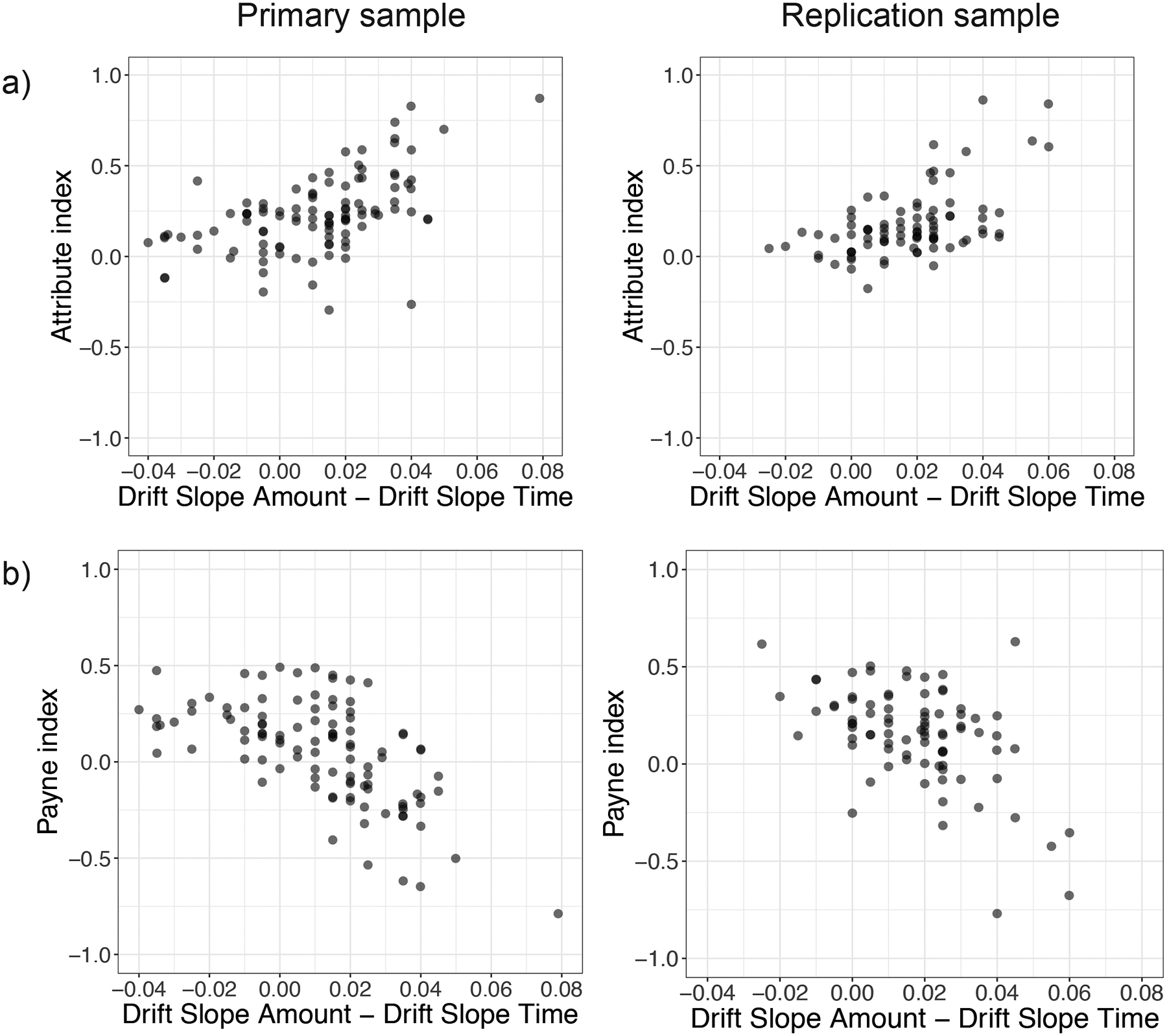Figure 4.

Differences in drift slope between amount and time attributes are reflected in measures of attention. Primary sample N = 105, replication sample N = 85 which includes all participants with sufficient eye-tracking data. a) The Attribute Index measures relative looking at amounts (index>0) versus times (index<0). Across participants, a bias toward looking at amounts was associated with a greater drift slope for amount information: two-sided Pearson’s product-moment correlation primary sample: t(103) = 6.35, p < 0.001, r = 0.53, 95% CI = 0.38 – 0.66; replication sample: t(83) = 6.05, p < 0.001, r = 0.55, 95% CI = 0.39 – 0.69. b) The Payne Index measures the relative likelihood of gaze transitions within options (index>0) or between attributes (index<0). Participants who tended to make more attribute-wise transitions also showed a greater drift slope for amount information; two-sided Pearson’s product-moment correlation primary sample: t(103) = −7.60, p < 0.001, r = −0.60, 95% CI = −0.71 – −0.46; replication sample: t(83) = −5.51, p < 0.001, r = −0.52, 95% CI = −0.66 – −0.34.
